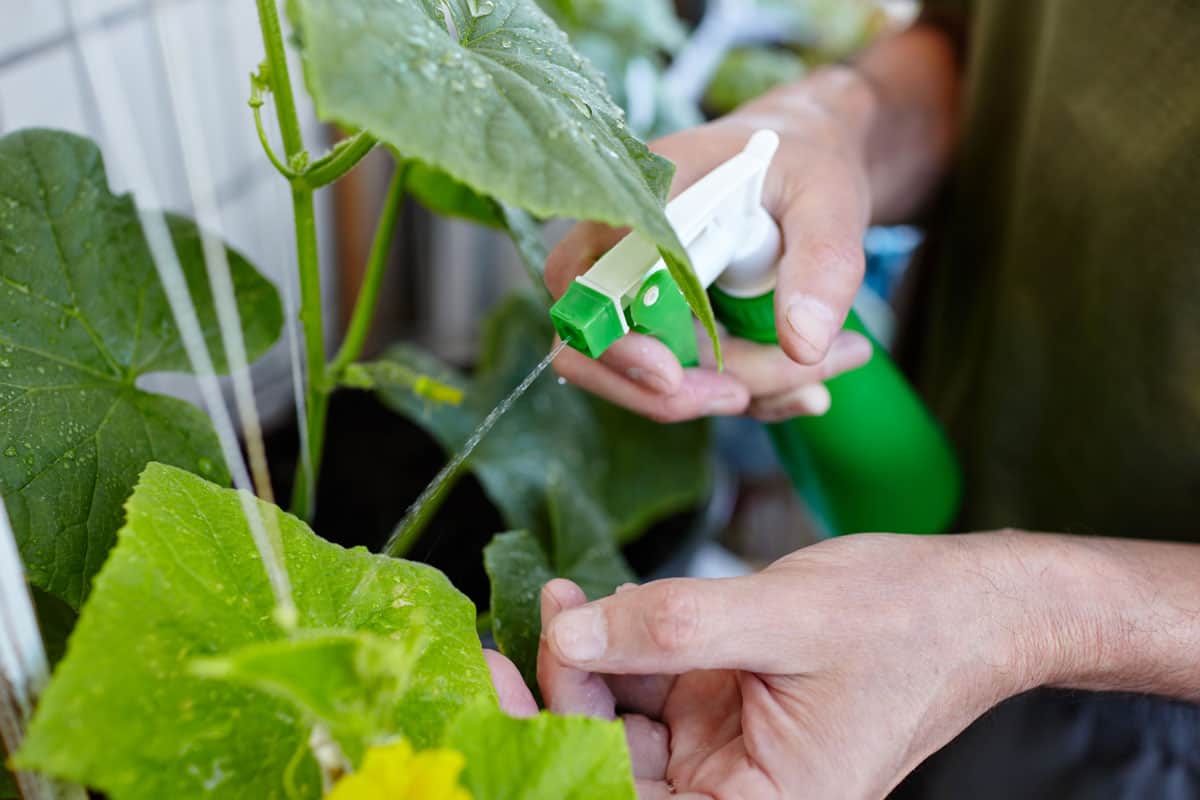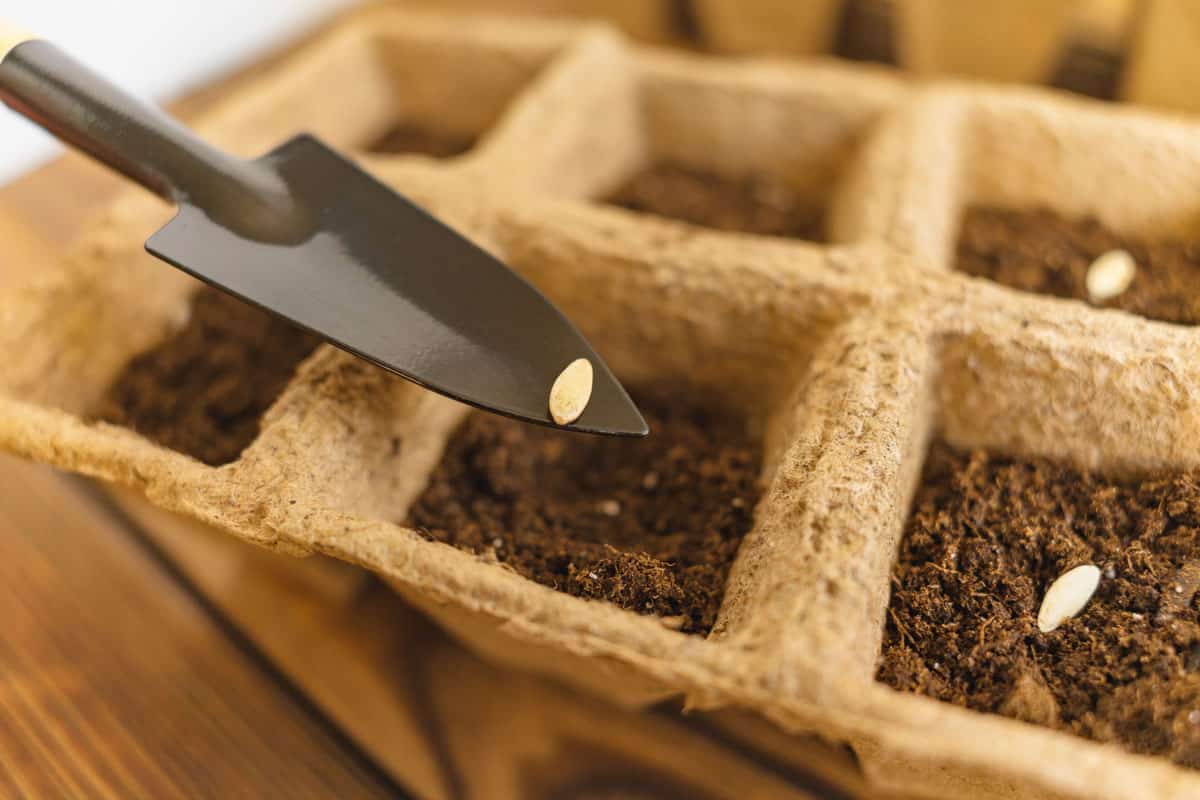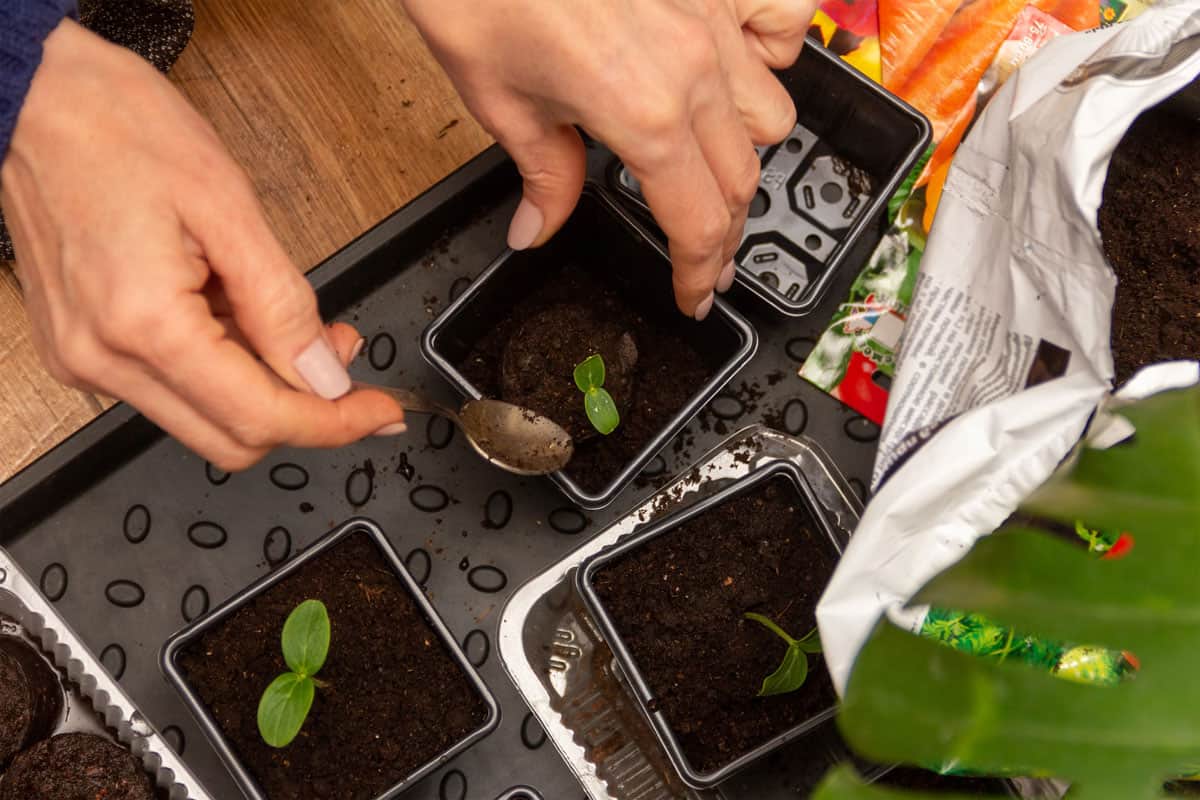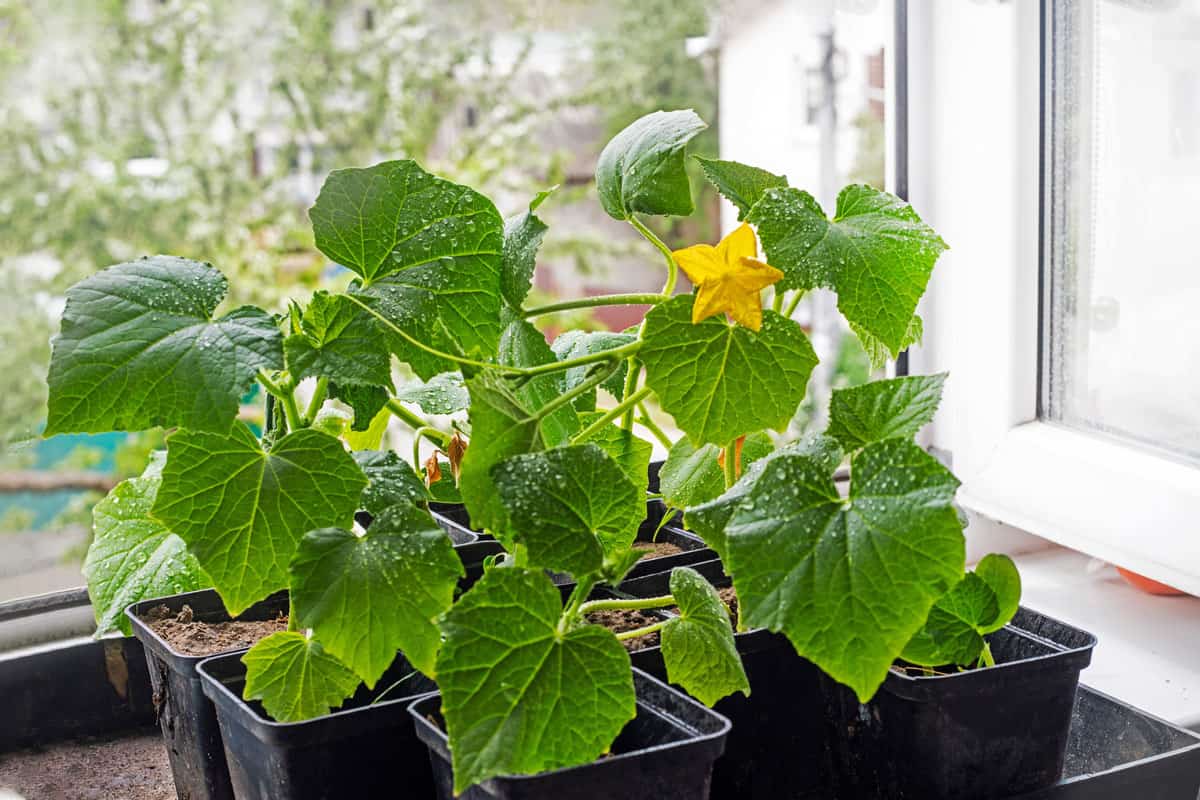Cucumbers are a popular vegetable that is often grown in outdoor gardens. However, not everyone has the luxury of having them planted outdoors; this leads to the question: can cucumbers be grown indoors?
Yes, cucumbers can be grown indoors!
However, there are a few things to consider before embarking on this endeavor. For one, cucumbers are vining plants and require a lot of space to grow.
Additionally, they need a lot of light and warmth to thrive, which can be difficult to replicate indoors. Nonetheless, with the right setup, it is possible to grow cucumbers indoors and enjoy fresh, homegrown produce all year round!
How To Grow Cucumbers Indoors?
Growing cucumbers indoors can be a rewarding experience, but it requires some specific conditions to be met. Here are the key requirements for growing cucumbers indoors:
Lighting
Cucumbers need a lot of light to grow properly. They require at least 6 hours of direct sunlight per day (ideally 8-10 hours per day).

If natural sunlight is not available, artificial lighting can be used.
Full-spectrum LED lights are a good option for indoor cucumber growing as they provide the right spectrum of light for plant growth.
The lights should be placed about 12 inches above the plants and kept on for 12-16 hours per day.
Temperature
Cucumbers prefer warm temperatures between 75 to 85°F.

The temperature should be kept consistent to avoid stress on the plants. If the temperature drops below 50°F or rises above 90°F, it can cause damage to the plants.
Humidity
Cucumbers need high humidity levels to thrive. The ideal humidity level for cucumber plants is between 60-70%.

If the humidity is too low, it can cause the leaves to wilt and the fruit to become dry. To increase humidity, mist the plants regularly or use a humidifier.
Soil and Fertilizer
Cucumbers require well-draining soil that is rich in nutrients. A soilless potting mix that contains perlite, vermiculite, and peat moss is a good option for indoor cucumber growing.

Fertilizer should be applied every two weeks during the growing season. A balanced fertilizer with a ratio of 10-10-10 or 20-20-20 is recommended.
When watering the plants, it's important to avoid getting water on the leaves, as this can cause fungal diseases. Water the plants deeply once a week and allow the soil to dry out slightly before watering again.
Choosing the Right Cucumber Variety
When it comes to growing cucumbers indoors, choosing the right variety is essential.
Not all cucumber varieties are suitable for indoor growing, and some perform better than others. Here are a few things to consider when selecting a cucumber variety for indoor cultivation:
1. Space Requirements
Indoor cucumber plants require ample space to grow and spread their vines. Therefore, it is essential to choose a variety that is suitable for indoor growing conditions.
Bush cucumbers, for instance, are compact and do not require much space, making them ideal for indoor cultivation.
2. Pollination Needs
Cucumbers require pollination to produce fruit. While outdoor cucumbers rely on bees and other pollinators, indoor cucumbers require manual pollination.
You should choose a variety that is easy to pollinate manually. Parthenocarpic cucumbers, for instance, produce fruit without pollination, making them an excellent choice for indoor growers.
3. Disease Resistance
Indoor growing environments can be prone to disease and pest infestations, making it crucial to choose a cucumber variety that is resistant to common diseases.
Look for varieties that are resistant to powdery mildew, downy mildew, and cucumber mosaic virus.
4. Yield and Fruit Size
The yield and fruit size of the cucumber variety are also important considerations.
Some varieties produce smaller fruits, while others produce larger fruits. Consider your space limitations and personal preferences when selecting a cucumber variety.
Planting and Caring for Indoor Cucumbers
With the right conditions and care, indoor cucumbers can thrive and produce healthy fruits. Here are some tips for planting and caring for indoor cucumbers:
Starting Seeds
To start growing indoor cucumbers, it's important to choose the right seeds.

Look for cucumber varieties that are suitable for indoor growing, such as bush cucumbers or dwarf varieties.
Start the seeds in a seed tray or pot with good-quality potting soil. Keep the soil moist and warm, and provide plenty of light.
Once the seedlings have developed their first true leaves, they can be transplanted into larger containers.
Transplanting
When transplanting cucumber seedlings, it's important to choose a container that is large enough to accommodate the plant's roots. A container that is at least 12 inches deep and wide is ideal.

Fill the container with good quality potting soil, and plant the seedling at the same depth it was growing in the seed tray. Water the plant thoroughly after transplanting.
Watering and Feeding
Indoor cucumbers need to be watered regularly to keep the soil moist. However, it's important not to overwater, as this can lead to root rot.

Allow the soil to dry out slightly between waterings, and water deeply when you do water.
Cucumbers also need regular feeding to grow healthy and strong. Use a balanced fertilizer every two weeks during the growing season.
Pruning and Training
Indoor cucumbers can become quite large; thus, you should prune and train them to keep them under control.

Pinch out the growing tips of the plant once it has reached the desired height, and remove any side shoots that develop.
Train the main stem of the plant up a trellis or stake to keep it upright and prevent it from sprawling.
Harvesting and Storing Indoor Cucumbers
When it comes to harvesting indoor cucumbers, timing is everything. The best time to harvest cucumbers is when they reach their full size but before they start to turn yellow.
This timing is usually around 50-70 days after planting. It's important to check the plants regularly to ensure that the cucumbers are not overripe.
To harvest the cucumbers, simply cut them off the vine with a sharp knife or scissors, being careful not to damage the plant.
It's best to harvest cucumbers in the morning when they are still cool and crisp. Once harvested, cucumbers should be stored in a cool, dark place to prevent them from spoiling.
Storing indoor cucumbers can be a bit tricky, but there are a few things you can do to extend their shelf life.
One option is to store them in the refrigerator. Cucumbers can be stored in the crisper drawer for up to a week.
However, be careful not to store them near fruits that produce ethylene gas, such as apples, bananas, and tomatoes, as this can cause the cucumbers to ripen too quickly and spoil.
Another option is to store cucumbers in a cool, dark place, such as a pantry or root cellar.
Cucumbers can be stored in a basket or container lined with paper towels to help absorb any excess moisture.
It's important to check the cucumbers regularly and remove any that are starting to spoil.
If you have an excess of cucumbers, you can also try pickling them.
Pickling cucumbers involves soaking them in a mixture of vinegar, water, salt, and spices. This can help extend their shelf life and provide a tasty snack or condiment.
Benefits of Growing Cucumbers Indoors
Cucumbers are a popular vegetable that can be grown both indoors and outdoors.

Growing cucumbers indoors, however, offers several benefits that outdoor growing cannot match. In this section, we will discuss the benefits of growing cucumbers indoors.
Year-Round Growing
One of the most significant benefits of growing cucumbers indoors is the ability to grow them year-round.
Indoor growing eliminates the need to wait for the right season to plant cucumbers. This means you can enjoy fresh cucumbers any time of the year, regardless of the weather outside.
Controlled Environment
Growing cucumbers indoors also allows for a controlled environment, which can be beneficial for the growth and health of the plants.
Indoor growing eliminates the effects of harsh weather conditions, pests, and diseases that can affect outdoor growing.
With a controlled environment, you can monitor and adjust the temperature, humidity, and light to ensure optimal growth conditions for your cucumbers.
In addition, indoor growing can reduce the need for pesticides and other chemicals that are often used in outdoor growing. This means you can enjoy fresh, organic cucumbers that are free from harmful chemicals.
In summary, cucumbers can be grown indoors with the right equipment and conditions.
It's important to note that indoor growing requires more attention to detail than outdoor growing. Still, it also offers several benefits, such as year-round production, controlled environments, and higher yields.
Growing cucumbers indoors is a viable option for those who want to produce fresh, healthy produce year-round.
With the right equipment, conditions, and attention to detail, indoor cucumber farming can be a rewarding and sustainable endeavor!
Read more:
How To Tell If Cucumbers Are Ready To Pick
How Big Do Cucumber Plants Get?
How Often To Fertilize Cucumbers: Timing And Techniques For Healthy Growth
